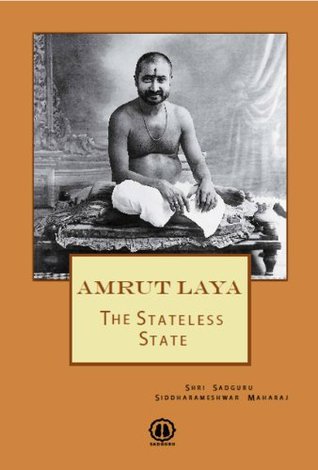Kindle Notes & Highlights
objectless knowledge. The knowledge, which calls an object by a specific name, is conceptual knowledge, or the mind. The Knowledge, which does not have consciousness of objects, is non-conceptual Knowledge. Whatever you grasp is applicable to you.
The merits and sins of the waking state do not, and cannot extend beyond the four bodies. What is the difference between the waking and the dreaming state? This could be best explained thus: Try to go back to a dream that you had yesterday, or more specifically, try to retrieve one of the articles that had appeared in that dream. It is impossible, as the dream is related to the dream body. Similarly sins and merits of the worldly state vanish with the gross body.
It is not at all related to the Self. Without the Knowledge of Brahman, all other actions and knowledge prove to be futile. In spite of all the resolve that you make, the body can never be purified.
What is Parabrahman? That natural, spontaneous (stateless) state, which remains after the inspiration "I Am" is cast off, is called Parabrahman. Whatever may be called Consciousness ultimately has to be given up. This is because Consciousness and Ignorance are both concepts.
You should feel that there is nothing but "I." Duality is thus eliminated and the feeling of oneness dawns.
Everything has risen from this Consciousness. Hence, Narayana is all-powerful. A place was required to accommodate Consciousness, so space was created. Later, Consciousness proliferated and countless objects came into being. With objects came the presence or absence of objects. He (Consciousness) is called "Knowledge," "The Seer," "The Witness" etc. The ignorant think of Consciousness as Paramatman (Supreme Self).
The Illusion that first came into being is called the Primal Illusion ("I Am"). This Primal Illusion is a fallacy, and whatever is created by this fallacy is untrue. It was only after the Primal Illusion that the world came into being. Just as the director of a play assigns various characters to various actors, so does Consciousness go about this play in the form of worldly existence.
Consciousness arises from Reality (Parabrahman). If Consciousness plummets towards worldly matters, it is characterized by the eruption of qualities (gunas). Accordingly, it is called the exciter of the attributes (Gunakshobhini). If Consciousness is turned back towards its origin, it vanishes. When Consciousness is in the quiescent state, it is called the
Gunasamya. When Consciousness is directed towards one's "True Nature" (Swaroopa), it is destroyed. If
Nonexistence of "I" (ego) is your true Existence. God is not a separate entity. You are God.
When untainted by any objects, our nature is like empty space. There is no time or place in the formless. Place and time are associated with form. The moment one becomes
aware of oneself as an individual, place and time come into existence.
Do not harbor too much desire for a particular thing, even if the objective is Self-realization, as this desire itself acts as a hindrance to "Absolute Knowledge."
Saying "I" is ego and saying "mine" is attachment.
The sense of ego, is also untrue. Ego means "I" and attachment means "mine." Both mine and I do not exist at all. They are generated only when you think of them. Mine and I are brought into play in a pair. Just as a father and a son come into being simultaneously, so do the seer and the seen come into existence together. When "mine" leaves, "I" automatically stands eliminated. The word "mine" is written as "mama" in Sanskrit. Here one "ma" belonging to the word "mama" represents "I," and the other represents "you." When "my mama" leaves, the "I" remains. You and I become "I." Both "you" and
...more
such as you and I vanish. "You" are "I." You then do not notice anything other. There is no one to say that there is "so-and-so." That "so-and-so," also does not exist.
That which is seen, only appears, it does not exist.
Saying "I" is ego, and saying "mine" is attachment, the ignorant one regards his body as "I," and calls it "mine."
By saying "My house," you make a distinction between you and the house. Here the word "my," becomes the cause. The seer and the seen can be clearly defined, and the seer can merge with the seen as well. The "I" and "my," simultaneously merge into oblivion. When
you say that there is nothing, you still remain. Eventually, there comes a time when the one who says that there is nothing also ceases to exist. That is the true "Self Form," or Swaroopa, that is "Absolute Knowledge," or Vidnyana. The "Spontaneous Natural State" is the real proof that establishes us. It is our true evidence. It is the "Truth," that is the only true state of Reality, and not a fabricated one. When you seem to make
changes in it, it is all just make-believe. It is our primordial True Nature without a beginning. The moment you work on it and make slight changes in it, the untrue and nonexistent objects, though fabricated, assume a spontaneously true character. "That which can be perceived and hence concentrated on, is Illusion...
This highlight has been truncated due to consecutive passage length restrictions.
conscious of this world is May...
This highlight has been truncated due to consecutive passage length restrictions.
When shelter is taken at the Sadguru's feet, the "Tat"(That) and "Tvam" (you) both drop off, and the rank of "Asi" (are) is secured by the grace of the Sadguru. It means you come to know that "You Are That" (Tat Tvam Asi).
My parents are the father and the mother of my body, but you, the Sadguru, are my real mother, and have produced me without the help of the womb. You are my mother as well as my father.


